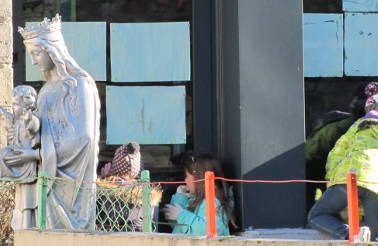
It used to be commonly accepted that the French Education system was one of the best in the world. Today, though any such a bold overall affirmation must be open to question, it is still true to say that the French education system is one of the more successful in the world, and that in certain fields it remains a world leader. According to theOECD, France's education system is average, compared to other developed countries.
Education is compulsory in France from the ages of 6 to 16, but a large majority of children start school well before the minimum age, often as young as two years old, and over 50% of 18-21 year olds in France are still in full-time education, or else following a vocational training course. Some 64% of all school pupils in France complete their secondary education, and take the high-school leaving certificate examinations, known as the baccalauréat or the baccalauréat professionnel. The official target - estimated as necessary for the needs of the nation - is 80%.
Kindergarten or pre-school. Ecoles Maternelles take pupils from age 2 to age 6, and prepare them for entry into primary school. The French école maternelle is more than just a playschool; the curriculum includes reading and writing, numeracy and even sometimes a foreign language, as well as artistic and creative activities. There are three classes, "les petits", "les moyens" and "les grands".
Middle school. Four levels, normally for pupils aged 11 - 15. The "collège unique" is the backbone of the French school system. All pupils go to collège, usually at age 11, but sometimes at an older age, if they have been made to repeat a year in primary school. The collège is designed to provide all pupils with a fundamental secondary education, after which a certain degree of specialisation will be introduced. In practice, pupils are frequently oriented during their collège years either towards general classes, from which they will be expected to continue their education in a traditional lycée, or towards more technical classes, after which they will be expcted to take an exam called the "brevet" (a kind of GCSE), and then either stop their secondary education (if they have reached school leaving age), or continue in a "lycée professionnel" or vocational high school. The programme in collège includes French, maths, history, geography, technical education, art/music, physical education, civic education, some science, and at least one foreign language. The four classes, corresponding to grades 6 to 9, are called sixième, cinquième, quatrième and troisième.
 High School. The traditional French lycée covers the last three years of secondary education. There are two main types of traditional lycée, the lycée général or lycée classique, and the lycée technique. In big towns and cities, there will be a mix of both types; in smaller towns, there may not be a lycée tehnique. The main function of the lycée is to prepare pupils to sit the baccalauréat (or bac) exam, the equivalent of British A levels. Classes in a traditional lycée cover the same range as in collège, with the addition of philosophy (for all) in the final year. The three classes (grades 10 to 12) are known as seconde, première and terminale.
High School. The traditional French lycée covers the last three years of secondary education. There are two main types of traditional lycée, the lycée général or lycée classique, and the lycée technique. In big towns and cities, there will be a mix of both types; in smaller towns, there may not be a lycée tehnique. The main function of the lycée is to prepare pupils to sit the baccalauréat (or bac) exam, the equivalent of British A levels. Classes in a traditional lycée cover the same range as in collège, with the addition of philosophy (for all) in the final year. The three classes (grades 10 to 12) are known as seconde, première and terminale.
In theory, all public lycées offer the same quality of education, in the framework of of the national education system, and private lycées have to provide the same quality; in practice, this is not strictly true, and "league tables" published each year highlight the very high performance levels of a number of lycées that are commonly recognised as France's top shools: these include the Lycée Louis-le-Grand or Lycée Henri-IV in Paris, the Lycée Fermat in Toulouse, and a handful of other famous public lycées. However, in recent years, more and more of the top positions in the league tables have been taken by private lycées, such as the Collège Stanislas in Paris, France's largest private lycée.
In 2010, the French lycée league table published by the Figaro newspaper had only 6 state lycées in the top twenty, while that published by the magazine l'Etudiant had only five state lycées among the top twenty, and the league table published by L'Internaute had eight public lycées as against 12 private schools in the top twenty. At secondary school (high school) level, about 20% of pupils are in private schools, against slightly less than 80% in public state school. See below Public and private schools